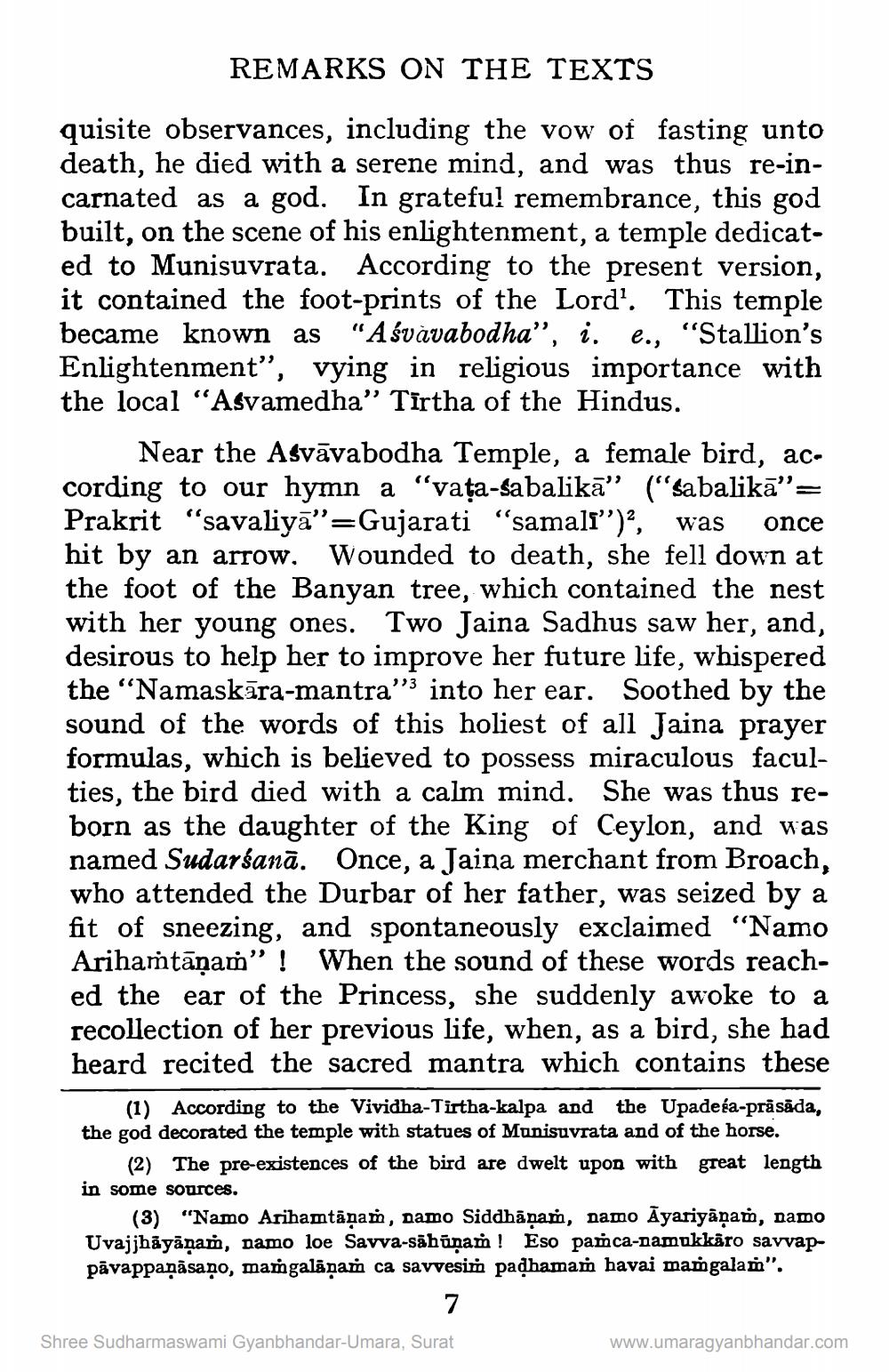________________
REMARKS ON THE TEXTS
quisite observances, including the vow of fasting unto death, he died with a serene mind, and was thus re-incarnated as a god. In grateful remembrance, this god built, on the scene of his enlightenment, a temple dedicated to Munisuvrata. According to the present version, it contained the foot-prints of the Lord'. This temple became known as "Asvavabodha”, i. e., "Stallion's Enlightenment”, vying in religious importance with the local “Asvamedha” Tīrtha of the Hindus.
Near the Asvāvabodha Temple, a female bird, according to our hymn a "vata-sabalikā" ("sabalikā”= Prakrit "savaliyā”=Gujarati "samali'')?, was once hit by an arrow, Wounded to death, she fell down at the foot of the Banyan tree, which contained the nest with her young ones. Two Jaina Sadhus saw her, and, desirous to help her to improve her future life, whispered the "Namaskāra-mantra''3 into her ear. Soothed by the sound of the words of this holiest of all Jaina prayer formulas, which is believed to possess miraculous faculties, the bird died with a calm mind. She was thus reborn as the daughter of the King of Ceylon, and was named Sudarśanā. Once, a Jaina merchant from Broach, who attended the Durbar of her father, was seized by a fit of sneezing, and spontaneously exclaimed “Namo Arihamtāņam”! When the sound of these words reached the ear of the Princess, she suddenly awoke to a recollection of her previous life, when, as a bird, she had heard recited the sacred mantra which contains these
(1) According to the Vividha-Tirtha-kalpa and the Upadeéa-prāsāda, the god decorated the temple with statues of Munisuvrata and of the horse.
(2) The pre-existences of the bird are dwelt upon with great length in some sources.
3) "Namo Arihamtānam, namo Siddhānam, namo Āyariyāṇam, namo Uvajjhāyānam, namo loe Savva-sābūnam ! Eso pañca-Damnkkäro savvappāvappaņāsaņo, mamgalānam ca savvesimin padhamam havai mamgalam".
Shree Sudharmaswami Gyanbhandar-Umara, Surat
www.umaragyanbhandar.com




